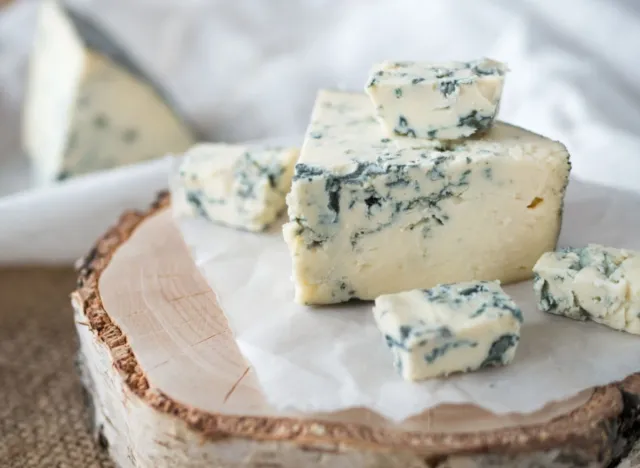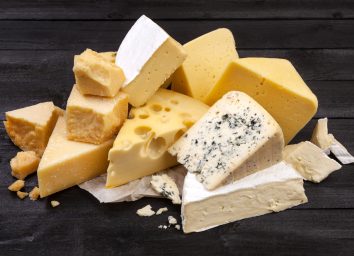This Is the Most Unhealthy Cheese You Can Buy

Before you build your next charcuterie board, you might want to reconsider what cheese(s) you select to accompany your crackers, veggies, and meats. While most grocery stores have an overwhelming number of cheese varieties—some sharp and flavorful, some soft and crumbly, and others just smelly—when it comes to nutrition, the most unhealthy cheese might surprise you.
It's worth stating up front that cheese isn't exactly famous for being healthy, but that doesn't mean you need to avoid it altogether. "All foods, including cheese, can be consumed in moderation," says Toby Amidor, MS, RD, CDN, FAND, award-winning nutrition expert and author of the best-selling book The Create Your Plate Diabetes Meal Prep Cookbook. "I would not recommend swapping out cheese[s]—they are SO flavorful and delicious," she adds.
We couldn't agree more. Still, some cheeses contain a staggering amount of saturated fat, which can have a negative impact on your health goals. And one of the biggest offenders of them all is blue cheese.

One cup (135 g) of crumbled, not packed, blue cheese contains a whopping 25 grams of total saturated fat, making it one of the most unhealthy cheeses you can choose. "A diet high in saturated fat has been linked to an increased risk of heart disease," Amidor says. That's because saturated fats are known to increase dangerous levels of LDL cholesterol in the body, according to Harvard Health, which can boost your risk of heart disease, heart attack, or stroke.
In addition to the potential for cardiovascular issues, eating large portions of blue cheese (or any foods that are high in saturated food) on a regular basis can lead to weight gain. Blue cheese is not only high in fat, but it also contains very little amounts of conjugated linoleic acid (CLA)—a healthy fat that studies show helps prevent obesity and possibly reduce inflammation. In other words, blue cheese doesn't have a ton of redeeming qualities (apart from being delicious, of course).
Considering that the 2020-2025 Dietary Guidelines for Americans recommend that your diet shouldn't exceed more than 10% saturated fat per day, just "one ounce of a cheese high in saturated fat certainly falls into those guidelines," Amidor says.
So, if you are planning to pick up a container of crumbled blue cheese on your next grocery store run, try to be mindful of how much you're consuming, and remember the golden rule: Everything is fine in moderation.
"I have a delicious and healthy recipe for a Buffalo Chicken Salad and I use one ounce of blue cheese in order to make the dressing," Amidor says. And fortunately, "a little bit just goes a long way."








